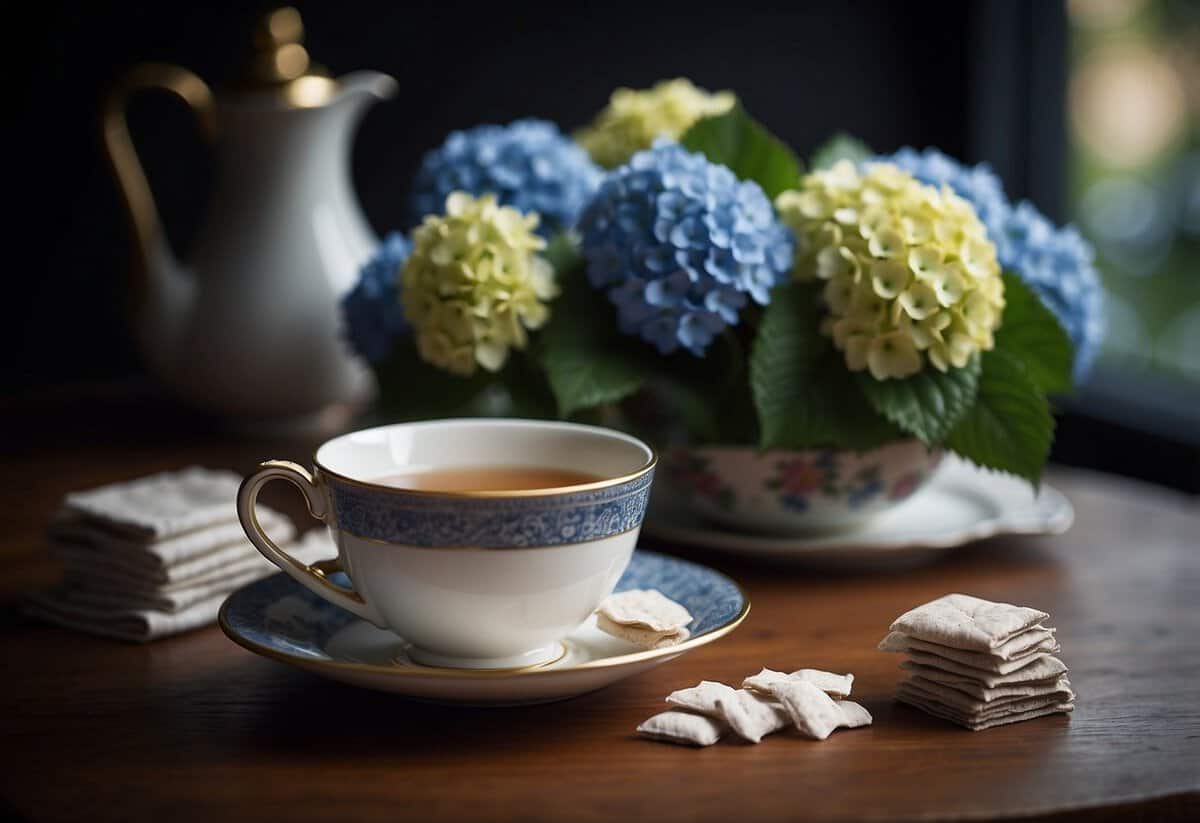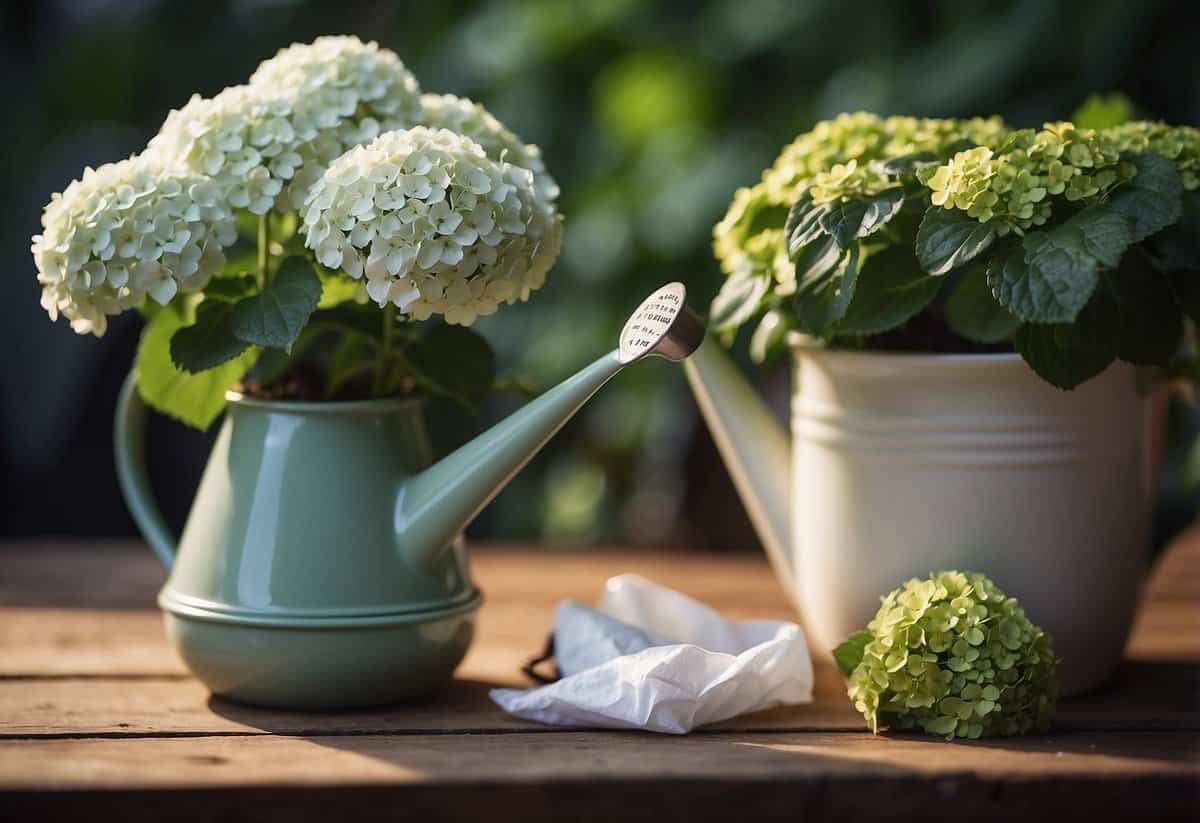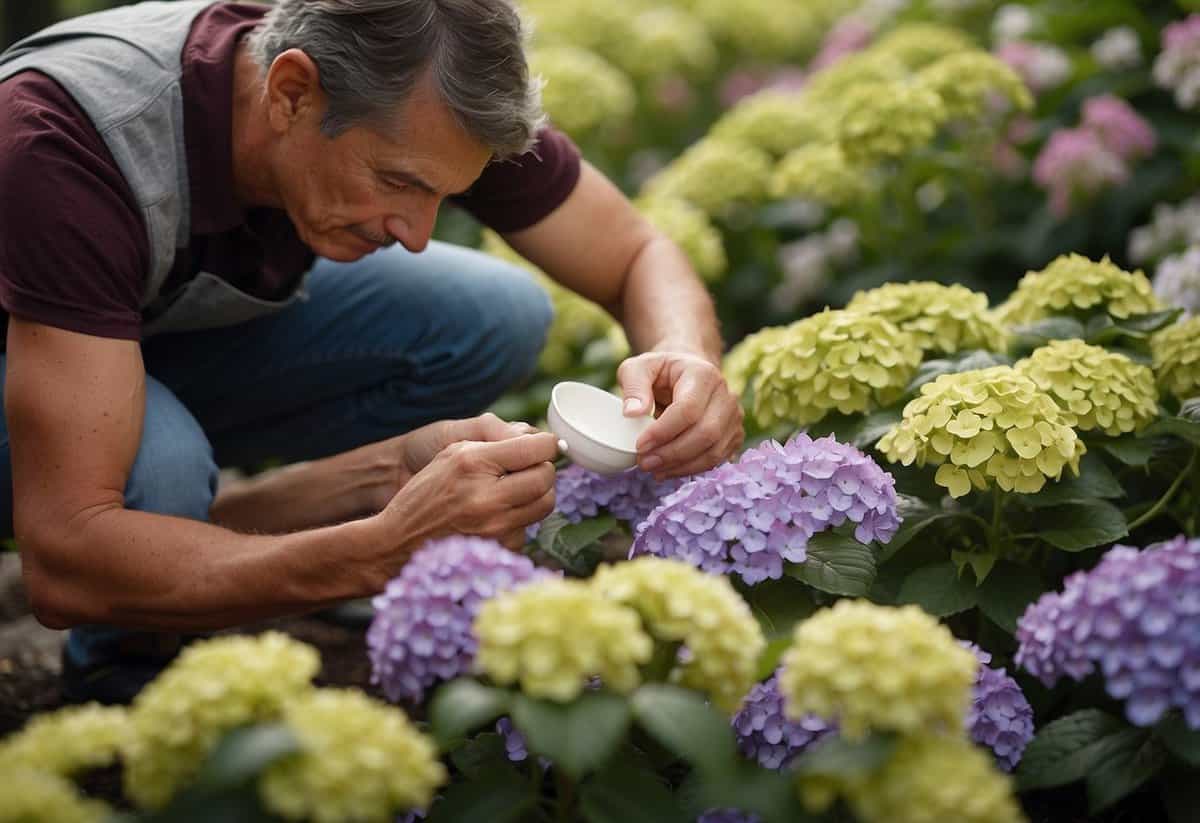Do Hydrangeas Like Tea Bags? Boost Your Blooms Naturally
Hydrangeas are popular garden plants known for their beautiful, vibrant blooms. Yes, hydrangeas do like tea bags! The natural acidity of tea leaves can help create the optimal soil conditions for your hydrangeas. By adding used tea bags to your garden, you can lower the pH level of the soil, making it more acidic and beneficial for these plants.

When you incorporate tea bags into your gardening routine, you also boost soil health. The tea bags decompose, releasing nutrients that enrich the soil, which supports the overall growth of your hydrangeas. This technique is simple and eco-friendly, as it recycles waste while aiding your garden.
Moreover, using tea bags can help improve your hydrangeas’ color and vigor. If your hydrangeas have been looking dull, a little tea can go a long way in reviving their vibrant hues. With just a few tea bags, you can enhance the beauty and health of your garden.
Ideal Soil Conditions for Hydrangeas

Hydrangeas thrive in well-draining soil that is rich in organic matter. The soil’s pH status and nutrient content play crucial roles in determining the plant’s health and bloom color.
Acidic vs. Alkaline Soil
Hydrangeas’ flower color is highly influenced by soil pH. In acidic soil (pH below 6.5), Bigleaf hydrangeas produce blue flowers. You can lower the soil pH by adding sulfur or aluminum sulfate. In contrast, alkaline soil (pH above 6.5) results in pink flowers. To raise soil pH, incorporate lime. Soil pH is a significant factor, especially if you’re trying to achieve a specific flower color. Hydrangeas can’t survive in soil with pH below 5.0 or above 8.0, so maintain pH within this range.
Nutrient Requirements
Hydrangeas need a balanced supply of essential nutrients for optimal growth. Nitrogen, phosphorus, and potassium are the primary nutrients they need. Fertilize your hydrangeas in spring and mid-summer with a balanced fertilizer (10-10-10). Additionally, trace elements like iron and magnesium can prevent chlorosis (yellowing of leaves). Over-fertilization can hurt hydrangeas, so follow labeled instructions on fertilizer packages. Regularly check soil nutrient levels with a soil test kit for precise adjustments.
Improving Soil with Organic Matter
Adding organic matter can significantly improve soil quality for hydrangeas. Use compost, peat moss, and mulch to enhance soil structure, retain moisture, and provide nutrients. Organic matter also promotes good drainage, essential for hydrangeas, which prefer moist but not waterlogged soil. Coffee grounds can add acidity to the soil, beneficial for blue blooms. Regularly mix organic matter into the soil and apply a layer of mulch around the base of the plants to maintain consistent soil moisture and reduce weeds. Organic amendments can transform even poor soil into a thriving habitat for your hydrangeas.
The Role of Tea Bags in Hydrangea Care

Using tea bags for hydrangeas can change the soil’s acidity and add essential nutrients. This helps hydrangeas grow better, as they prefer acidic soil. Let’s explore how tea bags can boost hydrangea health.
Adding Acidity to Soil
Hydrangeas thrive in slightly acidic soil. Tea bags contain tannins, which can lower soil pH levels, creating a better environment for acid-loving plants.
By adding used tea bags to your soil or compost, you can help your hydrangeas get the right acidity. Leave the tea bags in water overnight and use the “tea” to water your plants for best results. This approach helps hydrangeas absorb nutrients more effectively and promotes healthier blooms.
Nutritional Benefits and Risks
Tea leaves are full of beneficial nutrients like nitrogen, potassium, and phosphorus. These nutrients support strong growth and flowering in hydrangeas. Nitrogen promotes lush foliage, while potassium enhances overall plant health and disease resistance.
Used tea bags can offer a slow-release of these nutrients to your hydrangeas. Be cautious though, as too many tea bags can lead to an imbalance in soil nutrients. It’s important to monitor how your plants respond and adjust the application as needed to avoid any potential negative impacts.
Methods of Application
You have a few different options when using tea bags for hydrangeas. One method is to bury used tea bags around the base of your plants. This allows the nutrients to slowly release as the tea bags decompose.
Another option is to brew the tea bags in water and use the liquid to water your hydrangeas. This helps deliver nutrients and tannins directly to the roots. Ensure that the tea bags are free from staples or strings to avoid any contaminants.
Incorporating tea bags into your gardening routine can be an easy and effective way to support the health of your hydrangeas.
Watering and Fertilization Practices

Proper watering and fertilization are vital for healthy hydrangeas. This includes using the right amount of water and selecting suitable fertilizers like tea bags. Ensuring these practices will promote plant growth, deter pests, and prevent fungus.
Proper Irrigation Techniques
Hydrangeas need consistent moisture, but the soil shouldn’t be waterlogged. Water the plants deeply to reach the roots, usually about an inch per week. Spread this over three sessions to keep the soil evenly moist. Avoid watering from above as it can lead to fungal diseases.
In hot or dry climates, you might need to water more frequently. Mulching around the base of your hydrangeas helps retain moisture. Check the soil regularly to ensure it’s moist but not soggy. Well-drained soil ensures roots don’t sit in water, preventing root rot.
Natural Fertilizers and Hydrangea Growth
Natural fertilizers can be great for hydrangea growth. Used tea bags are a good option due to the nitrogen, phosphorus, and potassium they release into the soil. Simply place the used tea bags around your hydrangea and cover with soil. This slow release of nutrients supports healthy growth and vibrant blooms.
Compost and well-rotted manure are also effective. Apply these in early spring and again in summer. Granular fertilizers should be used carefully to avoid overfeeding. Water after applying any fertilizer to help nutrients reach the roots.
Avoiding Common Pests and Diseases
Pests like aphids and spider mites can damage hydrangeas. Remove affected leaves and use insecticidal soaps if pests are present. Natural predators like ladybugs can also help control pest populations. Regular inspections are essential to catch infestations early.
Fungal diseases like powdery mildew and leaf spots occur with improper watering or poor air circulation. Water at the base to avoid wetting leaves and prune dense foliage to improve airflow. Neem oil can be useful for treating fungal diseases.
By following these practices, you can enjoy healthy hydrangeas with beautiful blooms.
Cultivating Vibrant Hydrangea Blooms

To cultivate vibrant hydrangea blooms, the key factors include soil composition and proper seasonal care. Both elements impact the health and appearance of your hydrangeas, making them flourish beautifully in your garden.
Impact of Soil on Flower Color
Hydrangea blooms can vary in color based on the soil’s pH level. Acidic soil (with a pH below 6) usually yields blue hydrangeas. In contrast, alkaline soil (pH above 7) tends to produce pink hydrangeas. The presence of aluminum in the soil also influences the color change.
To encourage blue flowers, you can add aluminum sulfate to the soil. For pink flowers, adding lime can help increase the pH level. Regular soil testing will help you keep track of the pH and make the necessary adjustments to achieve the desired color of your blooms.
Seasonal Care for Lasting Blooms
In the spring, prune your hydrangeas to remove any dead or weak branches. New growth will benefit from proper pruning and result in more abundant blooms.
When summer arrives, ensure your hydrangeas receive the right amount of water. They prefer consistently moist soil, especially during hot weather. Adding a layer of mulch helps retain moisture and keeps the roots cool.
For cold weather, winter care is essential. Protect your hydrangeas by applying mulch around the base and covering the plants with burlap or other protective materials. This prevents damage to the old growth, ensuring your plants bloom healthily in the next season.
Make sure your hydrangeas get partial sun for optimal growth. Morning sun with afternoon shade is best to protect them from intense heat. By following these seasonal care tips, you’ll enjoy lasting and vibrant hydrangea blooms throughout the year.







